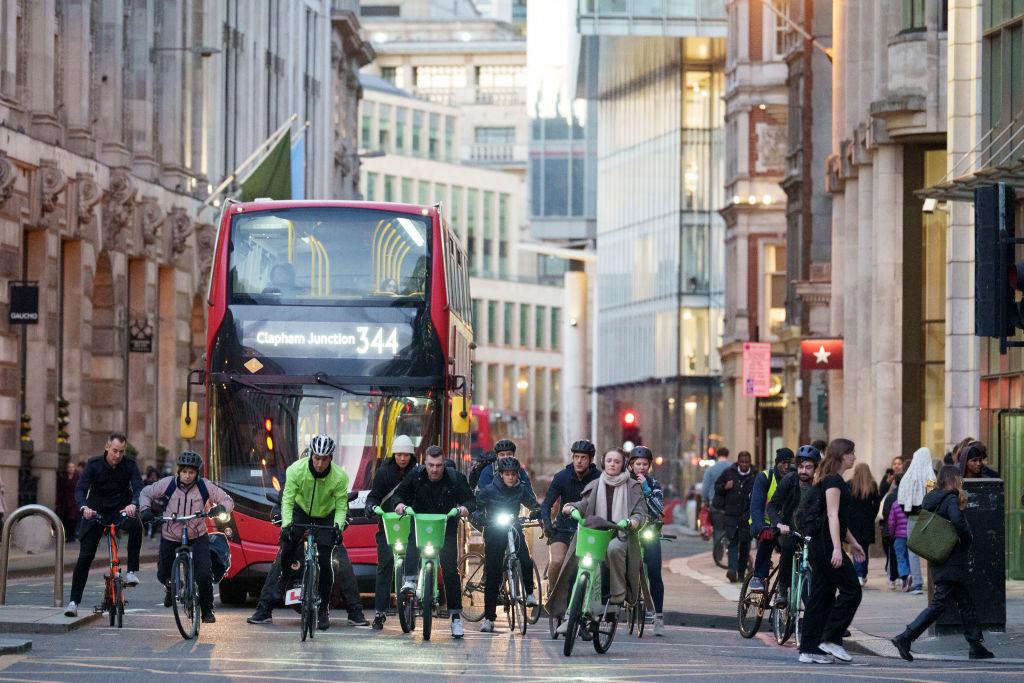Creating a Culture of Courteousness in Cycling: A Path to Safer Roads and Inclusive Communities
As cycling continues to gain traction as a popular mode of transportation and recreational activity, the need for a supportive and respectful environment among cyclists, motorists, and pedestrians has never been more pressing. Incidents of road rage, conflicts at intersections, and the growing number of accidents highlight a significant gap in courtesy that can often overshadow the joys of cycling. In this article, we explore actionable strategies for fostering a culture of courteousness in the cycling community. By examining successful initiatives from around the world, expert insights, and grassroots efforts, we aim to uncover how empathy, education, and community engagement can transform our roads into safer, more welcoming spaces for all. As the wheels of change begin to turn, it is essential to ask: how can we cultivate a culture where respect and consideration take the lead?
Fostering Respect on the Road: The Role of Educating Cyclists in Courteous Interactions
Courteous interactions among road users are essential for ensuring safety and fostering a positive cycling culture. By prioritizing education, we can empower cyclists to engage in respectful behaviors, which not only enhances personal safety but also builds a sense of community on the road. Effective strategies for achieving this can include:
- Workshops and Training Sessions: Regularly scheduled events that focus on proper cycling etiquette and the rights of all road users.
- Community Campaigns: Initiatives that promote messages about sharing the road and respecting fellow cyclists, pedestrians, and drivers.
- Peer-to-Peer Education: Encouraging seasoned cyclists to mentor newcomers on best practices for courteous cycling.
Public awareness campaigns can also play a crucial role in establishing this culture. Entities like local bike shops, cycling clubs, and city councils can come together to create engaging materials that emphasize the importance of courteousness on the road. A simple approach is to share statistics that highlight the benefits of respectful interactions:
| Statistic | Impact |
|---|---|
| Increased visibility and awareness | Reduction in accidents by up to 30% |
| Community events promote sharing | Improved cooperation among road users |
| Positive social interaction | Encourages more people to cycle |
Building Bridges: How Community Initiatives Can Promote a Culture of Kindness Among Cyclists
In communities across the globe, the push for safer and more cyclist-friendly environments has led to a surge in initiatives aimed at fostering positive interactions among cyclists and pedestrians alike. Local groups are stepping up by organizing events that focus on education and awareness, such as bicycle safety workshops and community rides. These gatherings not only promote safe cycling practices but also encourage a sense of belonging among participants, reinforcing the idea that every cyclist is part of a larger community. Events like “Bike to Work Day” or neighborhood ride-outs serve as a platform for cyclists to connect, share their experiences, and advocate for mutual respect on the roads.
Moreover, leveraging social media serves as an effective tool for cultivating a culture of kindness. Communities can initiate campaigns that highlight kind gestures among cyclists, such as greeting fellow riders, yielding the right-of-way, or lending a hand during mechanical issues. Local businesses can join in by offering discounts to cyclists who display a commitment to courteous cycling, effectively creating a culture rewarded by both peers and local commerce. A table of local initiatives showcasing their impact can also inspire further participation:
| Initiative | Description | Impact |
|---|---|---|
| Community Rides | Weekly organized rides for all skill levels. | Boosts camaraderie and shared knowledge. |
| Safety Workshops | Hands-on sessions on bike maintenance and road safety. | Increased awareness and proper cycling etiquette. |
| Social Media Challenges | Encouraging cyclists to document and share acts of kindness. | Creates a supportive online community. |
The Power of Visibility: Leveraging Infrastructure to Enhance Mutual Respect in Cycling Environments
Visibility in cycling environments is crucial for fostering a culture of mutual respect among all road users, including cyclists, motorists, and pedestrians. By enhancing infrastructure, such as dedicated bike lanes and clearly marked crossings, we can significantly reduce the chances of accidents and misunderstandings. Key strategies to enhance visibility include:
- Well-Lit Pathways: Illumination not only increases safety but also signals cyclists’ presence to drivers and pedestrians.
- Reflective Gear: Wearing visible clothing can make cyclists stand out, especially during dusk or dawn.
- Clear Signage: Informative signs help in navigating shared spaces and remind all users to be cautious and courteous.
Implementing these strategies requires a collaborative approach among city planners, cyclists, and local communities. A synergistic relationship can be cultivated by holding regular safety workshops and community rides that emphasize respect on the road. The impact of these initiatives can be illustrated in the following table that showcases the correlation between visibility enhancements and reported incidents:
| Year | Visibility Enhancements | Accident Reduction (%) |
|---|---|---|
| 2019 | Improved street lighting | 15% |
| 2020 | Dedicated bike lanes | 25% |
| 2021 | Enhanced signage | 10% |
Insights and Conclusions
As the world increasingly embraces cycling as a sustainable and healthy mode of transportation, fostering a culture of courteousness among cyclists, motorists, and pedestrians alike has never been more crucial. Creating an environment where mutual respect prevails is essential not just for safety but also for enhancing the overall cycling experience. Through educational initiatives, community engagement, and stricter enforcement of regulations, we can build a cycling culture that prioritizes safety and consideration for all road users. By promoting awareness and understanding, we can ensure that our shared spaces are welcoming and enjoyable for everyone, laying the groundwork for a more harmonious coexistence on the road. The journey towards a more courteous cycling culture is one that requires collaboration and commitment from all stakeholders-but with concerted effort, it’s a goal well within reach.











